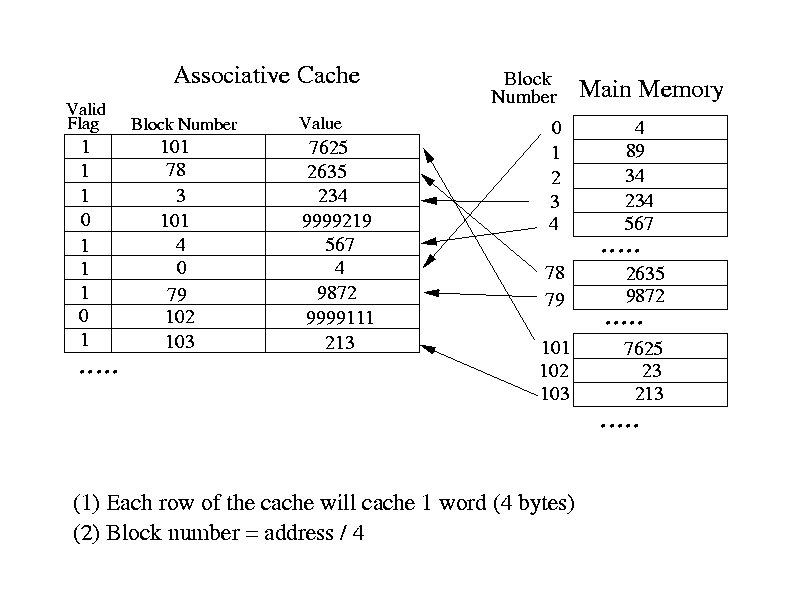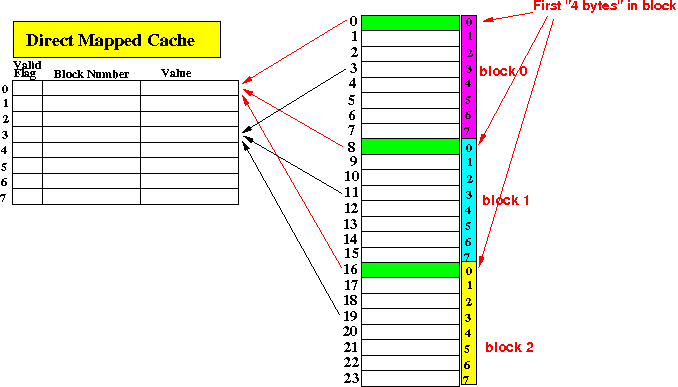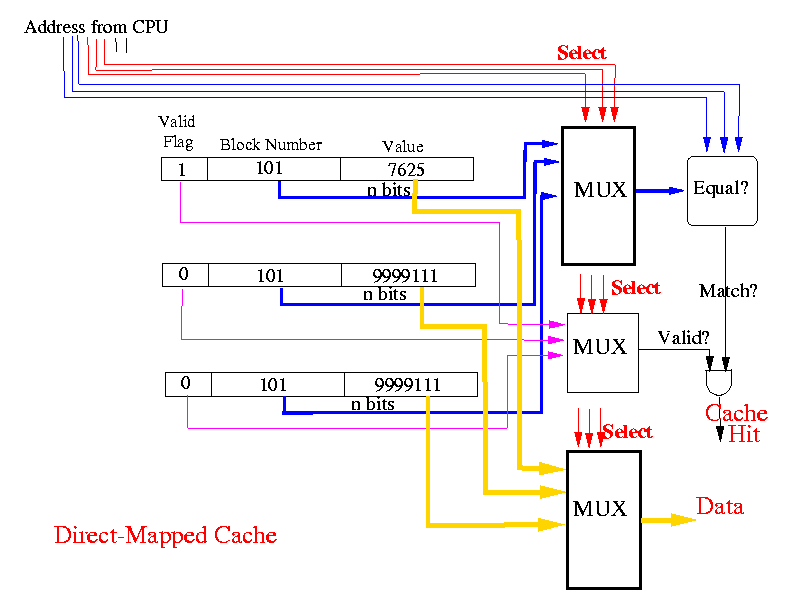- Strength/weakness of
the associative cache:
- Strength:
- Flexible:
a slot in the
associative cache can
store
a word from
any address in memory

- Flexible:
a slot in the
associative cache can
store
a word from
any address in memory
- Weakness:
- Expensive:
you need N
"Eq?" compare circuits
where N = # slots

- Expensive:
you need N
"Eq?" compare circuits
where N = # slots
- Strength:
- Strength/weakness of
the direct-mapped cache:
- Weakness:
- Inflexible:
a slot in the
direct-mapped cache can
not store
a word from
any address in memory
Entry 0 in the direct-mapped cache can only store the first word in a block
Entry 1 in the direct-mapped cache can only store the 2nd word in a block
And so on
- Inflexible:
a slot in the
direct-mapped cache can
not store
a word from
any address in memory
- Strength:
- Inexpensive to make:
you need 1
"Eq?" compare circuit
and 3 Muxes

- Inexpensive to make:
you need 1
"Eq?" compare circuit
and 3 Muxes
- Weakness:
- Set-associative cache:
- Set-associative cache =
a hybrid cache that
combine
the associative cache and
the direct-mapped cache
- A set-associative cache consist of
N
direct-mapped caches:

The direct-mapped caches use the set-associative cache parallel search technique to find an entry
- Set-associative cache =
a hybrid cache that
combine
the associative cache and
the direct-mapped cache
- How a
set-associative cache
store data
from memory:
- Entry 0 in a
block
must be cache in
slot 0 of
any one of
the direct-mapped cache of the
set-associative cache
Entry 1 in a block must be cache in slot 1 of any one of the direct-mapped cache of the set-associative cache
And so on

Example:

Note:
- A cache will never store the same memory data in multiple cache slots
- Entry 0 in a
block
must be cache in
slot 0 of
any one of
the direct-mapped cache of the
set-associative cache
- The set-associative cache is
constructed by
combining
both techniques used in
to construct
associative cache and
direct-mapped cache:
